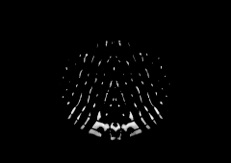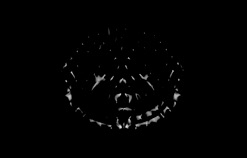Faraday Waves

Faraday_Waves_Godman_datasheet.docx
Faraday Waves is part of the Ritual tour, was selected for the Art & Science Days Concerts, Concours Bourges June 2016 and the Diffrazioni Festival November 2016, S. Maria Novella, Florence, Italy.
Rob Godman - Music
Sam Jury - Visualisation
Stephen Morris - scientific consultation
Faraday Waves is a short audio-visual work written as a companion piece for a concert-hall performance of Poème électronique by Varese. Faraday discovered that a liquid undergoing vertical vibration, whose frequency exceeds a certain value, becomes unstable to surface waves. Also known as Faraday Instability, they form non-linear standing waves that appear on liquids enclosed by a vibrating vessel. In ordinary Newtonian fluids (those that do not exhibit shear thickening or shear thinning) the wave patterns include ones with 1-fold symmetry (stripes), 2-fold symmetry (squares), 3-fold symmetry (hexagons) as well as higher orders of symmetry. The effect was first reported by Michael Faraday in 1831, and forms one of many experiments in visualizing vibration and sound – a means of converting analogue data from one form to another.
Thanks to an award from Santander, Rob was able to visit his colleague Professor Stephen Morris at the Physics Department, University of Toronto in May 2015. Part of Stephen’s research regards ‘shaking things’ and sound is often used as a form of stimuli. The visualization, created by Sam Jury, uses video documentation of the classic physics experiment invented by Faraday with the analogy of sound to image data transfer used as the starting point for the creation of the music.
Faraday Waves uses speech rhythms found in the e.e. cummings poem I Carry Your Heart With Me. Placed within the resonance of a bell; it symbolizes the creation and birth of a new life.

